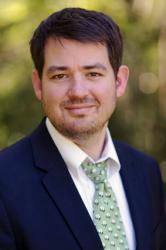“This is a story, really, about when America was at its best, when we were doing the right things in the world, when people all over the world looked to us as a source of goodness and decency and humanity,” says Andrei Cherny. His words come courtesy of the Voice of America article titled, “Berlin Airlift Remembered After 60 Years.” Cherny is the author of the new book The Candy Bombers: The Untold Story of the Berlin Airlift and America’s Finest Hour.
In 1948, Soviet leader Joseph Stalin blockaded the section of Berlin under the control of democratic allied countries in post war Germany. The western sector of the war torn city only contained 36 days of food, and a very limited supply of fuel. The Soviet Union also cut the power in the same sector as well. Stubbornly, The United States and other free countries were standing in the way of Soviet expansion into Western Europe.
Not wanting to start World War III, The United States and Great Britain sought out a way to break the Soviet blockade. Thus the airlift known as Operation Vittles flew its first flight on June 26th 1948, one of 32 that day. At its peak, the airlift was flying an amazing 1500 flights a day into Berlin, with just over 4500 tons of daily supplies. The airlift had to supply two million people with food and fuel. It was a mammoth 15 month long undertaking to insure liberty and freedom to America’s recent foe. At first, the planes reminded German citizens of allied bombers and some American pilots weren’t to keen about feeding Germans, however, barriers quickly fell, and friendships flourished.
German children began to greatly admire the American pilots and would stand at the edges of the airport watching the planes as they descended. The best known American pilot who served in the airlift is undoubtedly, Gail S. Halvorsen. Halvorsen was amazed after he gave some gum to a bunch of German kids on a fence line, and they patiently divided it up evenly. Halverson also notes the German kids never begged. He told the kids he would drop some candy attached to little parachutes right before he flew into the airport the next day, and wiggle his wings so they could identify him.
Operation Little Vittles was a powerful publicity campaign against totalitarian propaganda and influence, which developed because of a compassionate pilot with an idea. Soon American children donated their own candy to German kids. The United States showed further resolve by announcing, “The airlift would continue indefinitely.” The Soviets, whose image was battered, lifted the blockade in May of 1949. Stalin’s intent to divide Europeans had the reverse effect. Europeans united against Soviet aggression and inhumanity, and Stalin’s actions quickened American resolve in defending Western Europe.
The Berlin Airlift could have only been pulled off by a people dedicated to a free society. At Acton University, I had a good discussion with notable blogger Hunter Baker about the the moral implications of defending freedom during the Cold War. We both agreed that many younger Americans, those who are about my age, 29 and younger, don’t understand the virtue related to standing against totalitarian aggression. During my time in seminary, some students and professors tried to make moral equivocations between the United States and totalitarian regimes, focusing on “American sins”, and “saber-rattling.” They obviously were not thinking of the Berlin Airlift, a giant humanitarian operation, which rescued millions of people from the slavery of communism, while uniting the resolve of free people. The Spirit of Freedom, which is dedicated to preserving the memory and legacy of the airlift, has a very moving video tribute to the Berlin Airlift.

